Best Mac external hard drive: top storage options MacBook, iMac & Mac mini
After the best Mac external hard drive? We pick our favorites ranging from 4TB to 30TB+ perfect for backing up photos
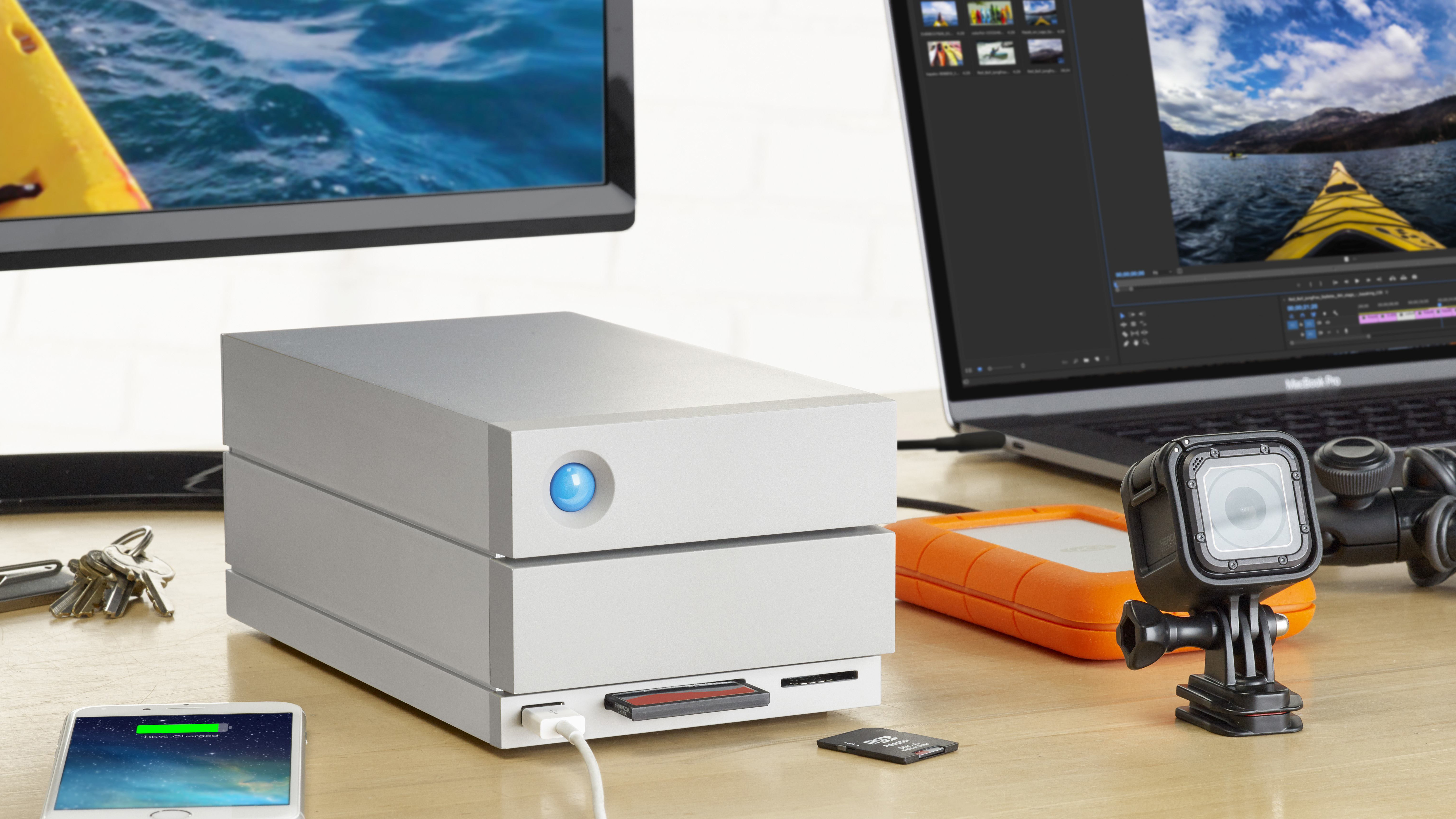
The best Mac external hard drive means you no longer have to clutter up your iMacs, MacBook, or Mac Mini with big files that slow everything down. Instead, you can move everything to an external device that lets you can access them whenever you like. In this guide, we'll help you choose the best Mac external hard drive for your needs, at the best price.
See also: Best monitors for MacBook Pro
These desktop-mounted hard drives are powered by a mains AC outlet and attach to your Mac via a USB or Thunderbolt connection. Capacities range from 4TB up to 30+TB, giving you plenty of space for high-res RAW files or high bit-rate 4K video.
While the best desktop external hard drives will usually work with a Mac, some hard drives come set up for exclusively Windows compatibility out of the box and would need to be reformatted to work with a Mac. This is a simple process, but on this list, we're only featuring hard drives that come pre-formatted to work with both Windows and Mac straight away: no special setup is required.
If you find yourself transferring a lot of data frequently, you might be better off with one of the best portable SSDs - they are more expensive but they're more reliable and have much faster transfer rates. Another advantage if they don't have any moving parts so if you drop them you're less likely to experience data loss. On the other hand, if you don't have loads of files and just need a couple of TB, one of the best portable hard drives will probably do the trick.
Alternatively, if you'd rather move everything to the cloud, we've also got a guide to the best cloud storage providers to check out. Now, on with our list of the best Mac external hard drive options available today...
The best Mac external hard drives
Why you can trust Digital Camera World
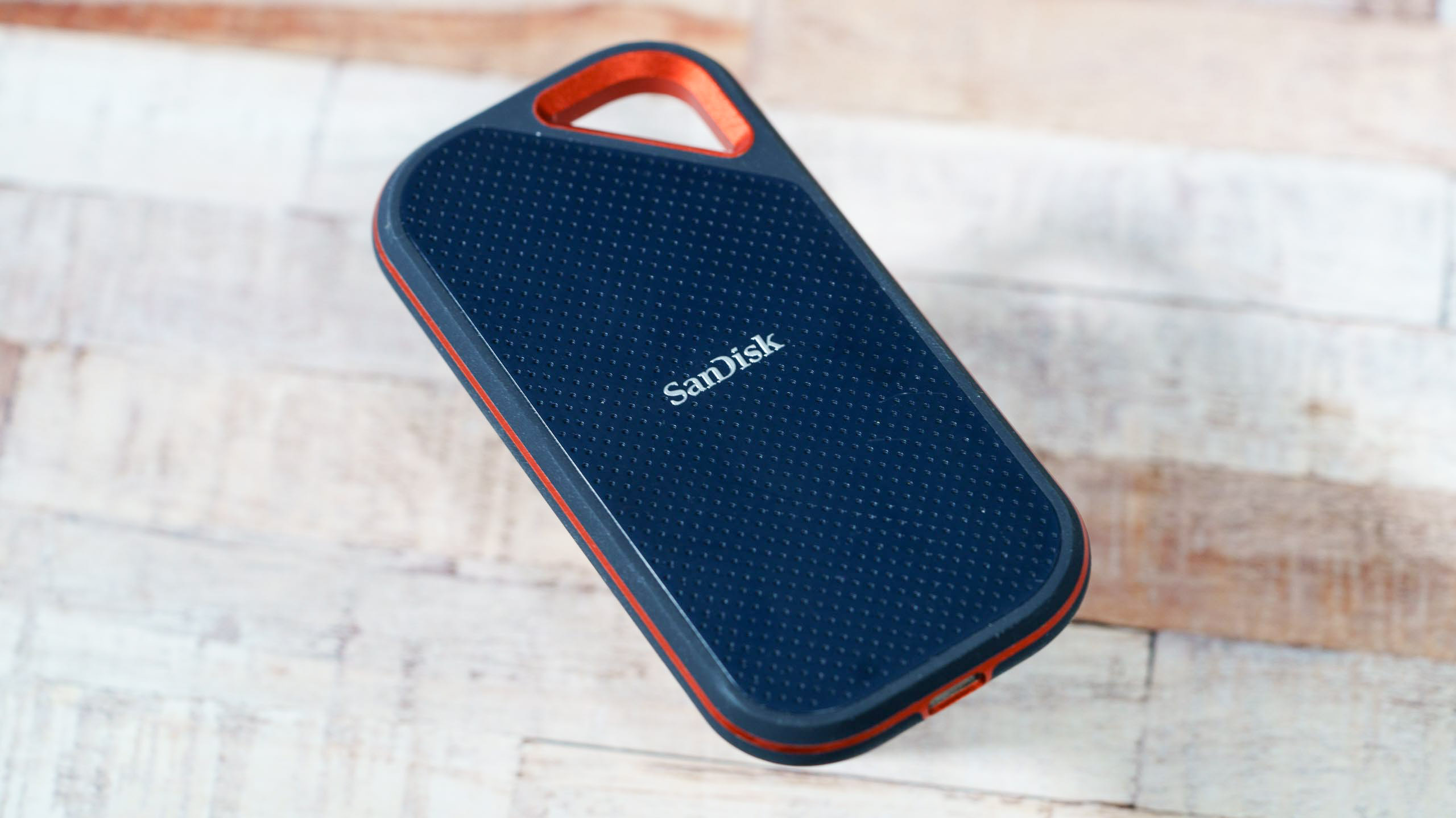
Specifications
Reasons to buy
Reasons to avoid
UPDATE, August 2023:
Numerous stories are emerging from credible tech websites and individual users that some SanDisk and WD-branded portable SSDs are experiencing sudden and unpredictable drive failure, resulting in data loss. We have contacted parent company Western Digital for a statement on the issue but have yet to receive a response. Consequently we cannot unreservedly recommend the purchase of a SanDisk or WD-branded portable SSD until the matter has been decisively resolved.
Strictly speaking, this is a portable storage solution, rather than a device that lives on your desk, but there's no reason why it can't be used in place of a bigger external desktop hard drive.
And while most external drives use older, slower mechanical hard disk drives to store your data, the Extreme Pro Portable SSD V2 is based around a blazing-fast NVMe SSD. This is linked to your Mac via the short-lived USB 3.2 Gen 2x2 connection: the USB generation that directly preceded the current USB 4 standard. But the USB 4 ports on an M1 or M2 Mac are backward compatible with USB 3.2 Gen 2x2. That means this SSD can still unleash its maximum speed potential of up to 2000MB/s, really putting the 'extreme' in Extreme Pro.
Capacities range from 1TB to 4TB, which isn't all that much next to some 10+TB desktop drives, but the payoff is that this is one of the very fastest external hard drives for a modern Mac.
If you're using an older Intel-powered Mac, then we'd recommend the cheaper SanDisk Extreme Portable SSD V2 (non 'Pro') as a portable option. It's slower on paper but will operate at similar speeds to the Extreme Pro when connected to a USB 3.2 port.
Also bear in mind that both these drives will be pre-formatted to work with both Windows and Mac. However, if you want to use them with Time Machine, they'll need to be reformatted, but it's a simple procedure.
Read our full SanDisk Extreme Pro Portable SSD V2 review
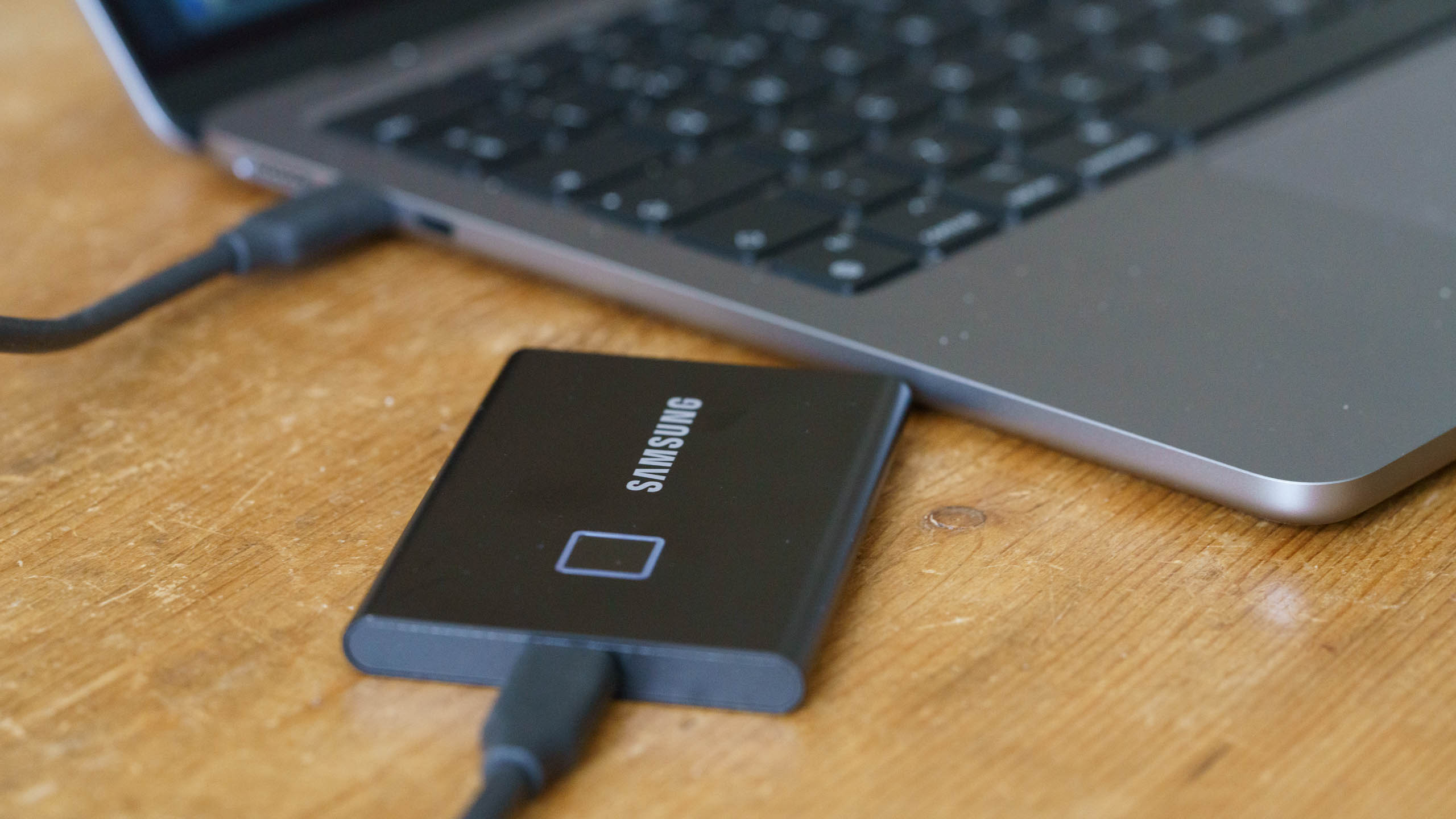
Specifications
Reasons to buy
Reasons to avoid
With reliability issues currently casting a shadow over our top pick SanDisk Extreme Pro Portable SSD V2 hard drive, why not consider Samsung's rival T7 Touch instead? Measuring just 85 x 57 x 8mm and weighing only 58g, this solid state drive (SSD) is perfect for slipping in your bag when you’re going to be away from home or the office and you need some storage space for your images and videos. There are now faster drives available, but it can read data at up to 1,050MB/s and write at up to 1,000MB/s, making it eminently suitable for temporary storage or use as a working drive.
The fingerprint recognition system has a negligible impact on the price of the T7 Touch in comparison with the T7, in fact, you may find the 500GB version is a little cheaper, and it could come in handy occasionally.
Read our full Samsung T7 Touch review for more details.
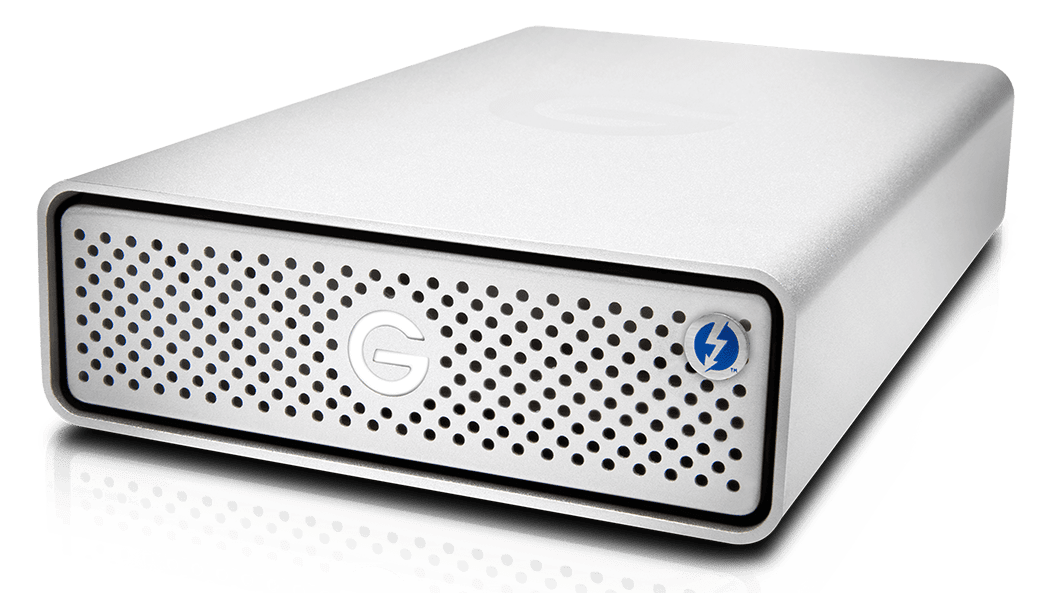
3. SanDisk Professional G-DRIVE Pro with Thunderbolt 3
Specifications
Reasons to buy
Reasons to avoid
An external hard drive for a modern Mac really needs Thunderbolt 3 connectivity to ensure the best possible performance. And with a pair of Thunderbolt 3 ports, this device from SanDisk is just the ticket. The sleek matte metal enclosure also looks like the part alongside Apple hardware, and it hides some serious capacity.
The Thunderbolt 3 G-Drive is available with up to a whopping 18TB of storage, though capacities down to 4TB are also available, with more accessible pricing. The G-Drive is pre-formatted to work flawlessly with Mac devices right out of the box, and it's Time Machine compatible.
If you do buy a smaller capacity and find you need additional space later on, you can use that second Thunderbolt 3 port to daisy chain an additional G-Drive, so you won't need to use up another Thunderbolt port on your Mac.
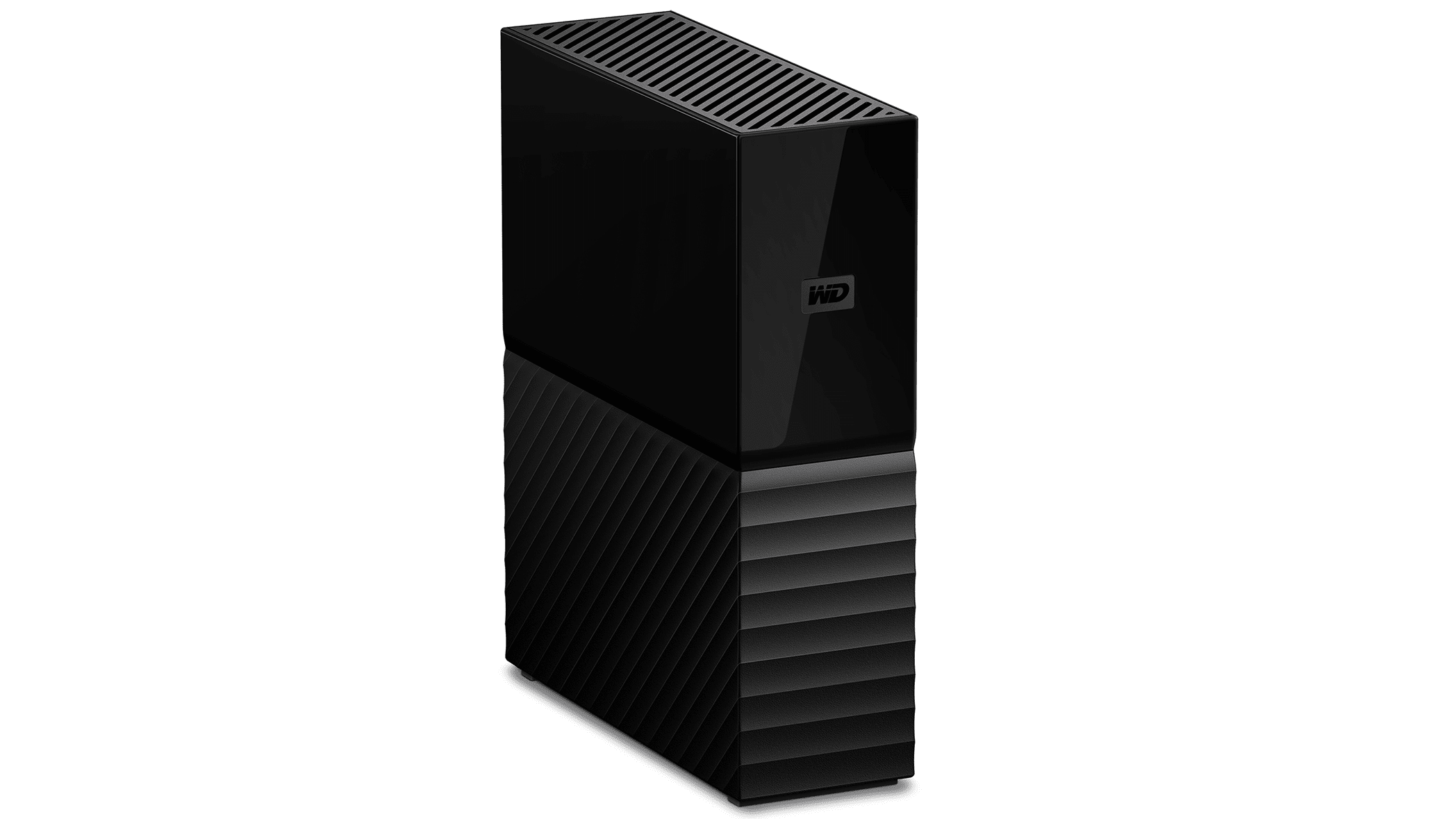
4. WD My Book
Specifications
Reasons to buy
Reasons to avoid
If you're just after a serious storage upgrade for your Mac, without spending a fortune, this external hard drive from one of the biggest brands in the business is ideal. It's based around a conventional hard drive rather than a super-fast SSD, so don't expect it to set any speed records. But the upside is you pay far less per GB of capacity, and you'll still find transfer speeds plenty quick enough for transferring high res images and HD video without too much waiting around.
The drive does require a separate power source, but this is the case for most external desktop hard drives. Capacities range from 4TB to a humongous 18TB, and all are well priced for the capacity you get, but we reckon the 8TB version is a decent price/capacity compromise.
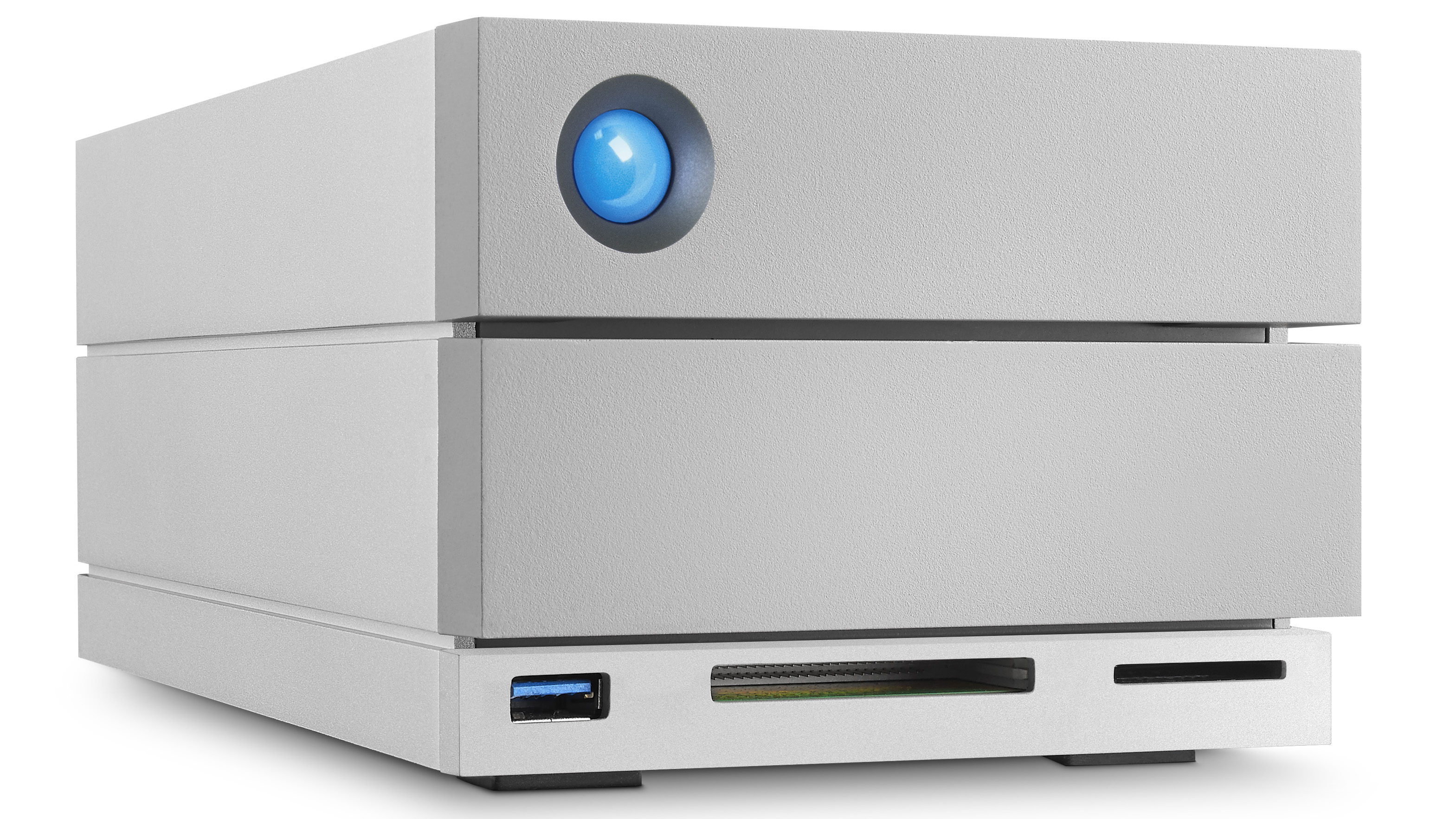
5. LaCie 2big Dock Thunderbolt 3
Specifications
Reasons to buy
Reasons to avoid
LaCie's '2big' external desktop drives each contain not one but two hard drives, with the idea being that your data is automatically copied onto both drives within. This means that should one drive fail, you'll still have a copy of your data on the other one. It's a technology called RAID: Redundant Array of Independent Disks.
The 2big Dock goes a step further by also including SD and CompactFlash card slots, so you can upload images and video directly to the 2big, or import them to editing software without the need for a separate card reader. There's also a USB 3.1 port for even greater data transfer versatility, while the dual Thunderbolt 3 ports allow for super-fast transfer speeds up to 440MB/s, as well as DisplayPort compatibility for supplementing your Mac's monitor with an additional 1080p or 4K display.
Capacities range from 8TB up to a huge 36TB, and all are backed by an impressive 5-year warranty.
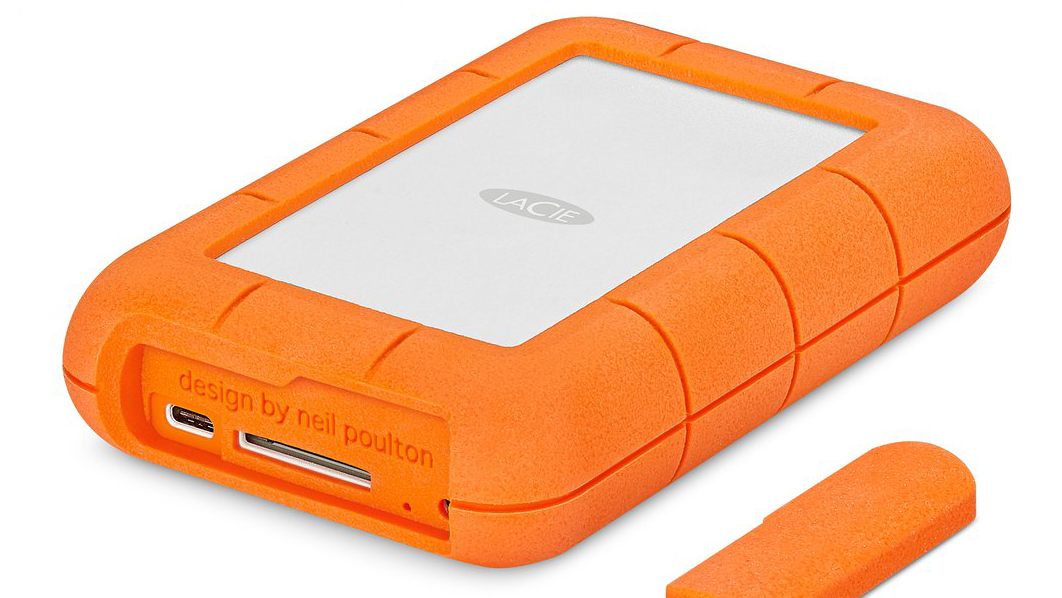
6. LaCie Rugged RAID Pro
Specifications
Reasons to buy
Reasons to avoid
Raid drives don't have to be bulky boxes confined to your desk. The LaCie Rugged RAID Pro is, strictly speaking, a portable hard drive. This means it can be used without a mains power outlet, with the USB-C connection providing enough power to run both the 5400RPM 2.5-inch hard disk drives housed within the Rugged RAID Pro.
However, you'll need to connect to a Thunderbolt 3 or USB 3.1 Gen 2 port for this to work: older USB connections that can't pump this much juice will require the RAID Rugged Pro to be powered by an included AC adapter.
The device supports RAID 0 for a max transfer speed of 250MB/s, though, for data redundancy, RAID 1 is required, and as such you'll be limited to 125MB/s. There's even a built-in SD slot so you can back up images and video directly when on the go; no need for a laptop.
What's more, as the name suggests, this is a rugged hard drive. It's IP54 water- and dust-resistant, you can drop it from a height of up to 1.2m (providing it's not switched on), and it can be driven over by a one-tonne car.
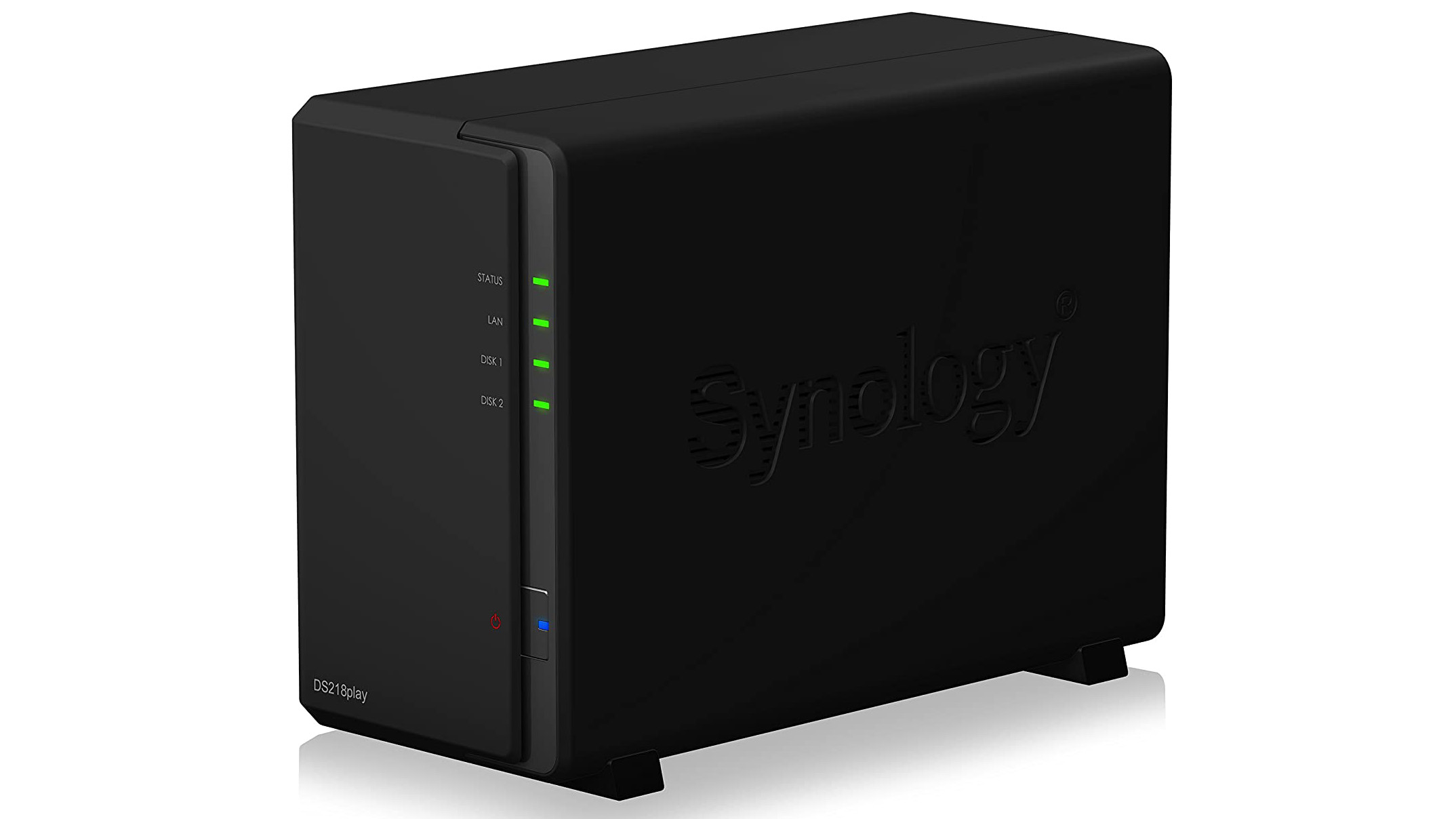
7. Synology DiskStation DS218play
Specifications
Reasons to buy
Reasons to avoid
A NAS (Network Attached Storage) drive is essentially an external hard drive on steroids. It allows your entire photo and video collection to be stored in one physical location in your home or studio, just like a conventional external hard drive. But unlike a normal external hard drive, a NAS drive adds a network connection, so it can be linked via your internet router to your home network and the web. NAS drives are also loaded with a simple computer operating system, allowing you to browse their file contents, and view photos and videos, all from a remote location.
Synology has a reputation for producing top-quality NAS devices, and the DiskStation DS218play is a great option for amateur photographers. While offering typical NAS options, it's also a versatile home media hub that's able to stream images and video to computers and mobile devices, as well as Apple TV. The versatile built-in multimedia players - Video Station, Photo Station, and Audio Station, each of which has a companion mobile app - make it effortlessly easy to access and view your media files.
Just bear in mind that, unlike a conventional external hard drive, NAS drives are generally supplied without hard disks inside, so you'll also need to factor in the extra cost of two hard disks to make the DS218 play operational.
Read more: The best NAS drives
FAQs
What effects how quickly I can transfer data?
The read and write speed of your particular hard drive will dictate how long it takes for a drive to open aka read a file and save (aka write) a file. Many of the external hard drives we have included on this list are pretty fast which is what you need especially if you're transferring large amounts of photo and video data - after all you don't want to have to spend ages waiting just to get your files from one place to another. Generally speaking, a hard drive with a transfer rate of 250-400mbps will take around 3-5 second to transfer a 2GB file.
How often should I back up my files?
Ideally you should perform a data back up every time you have new files. If you're using a Mac, you can setup Time Machine so that every time you plug your external hard drive in it automatically backs up otherwise once a month is a good place to start.
What happens if I don't safely remove my hard drive?
One of the sure fire ways to lose data and damage your hard drive is by not safely ejecting it. If you just pull the cable out, any data being written could corrupt and you could physically damage the drive. This is because when you safely eject a drive it gradually slows down - this is one of the reason SSDs are more reliable.
Get the Digital Camera World Newsletter
The best camera deals, reviews, product advice, and unmissable photography news, direct to your inbox!
Ben is the Imaging Labs manager, responsible for all the testing on Digital Camera World and across the entire photography portfolio at Future. Whether he's in the lab testing the sharpness of new lenses, the resolution of the latest image sensors, the zoom range of monster bridge cameras or even the latest camera phones, Ben is our go-to guy for technical insight. He's also the team's man-at-arms when it comes to camera bags, filters, memory cards, and all manner of camera accessories – his lab is a bit like the Batcave of photography! With years of experience trialling and testing kit, he's a human encyclopedia of benchmarks when it comes to recommending the best buys.

